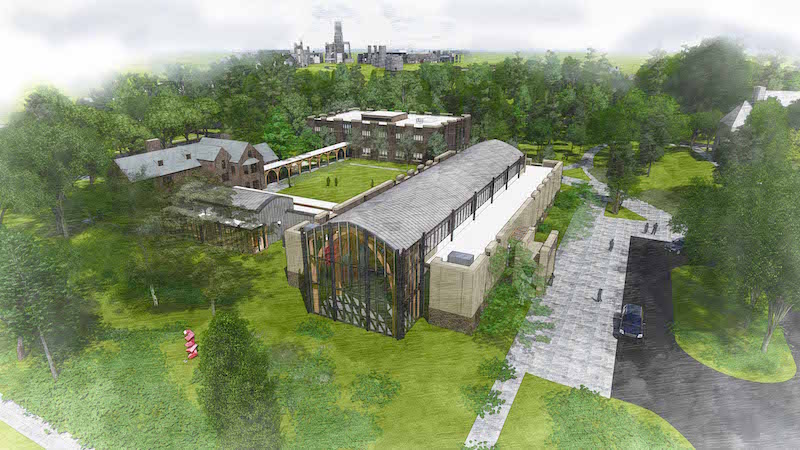The Karsh Alumni and Visitors Center will total almost 47,000 sf across three different buildings on Duke University’s campus. Centerbrook Architects & Planners designed the new complex, which includes event and office space for the Duke Alumni Association and a visitor center.
The largest aspect of the complex is a new 20,200-sf events building with a grand dining and presentation hall, exhibits and lounges, a café, visitor support services, and a smaller meeting pavilion wing. The building is designed to be the first campus stop for returning alumni, prospective students, and visitors. “The striking contemporary glass complements solid walls that hint at Gothic traditions with vertical fenestration, cast stone panels, and a base of locally quarried ‘Duke stone,’ a prominent campus characteristic,” says Mark Simon, FAIA, Centerbrook Principal and Project Architect.
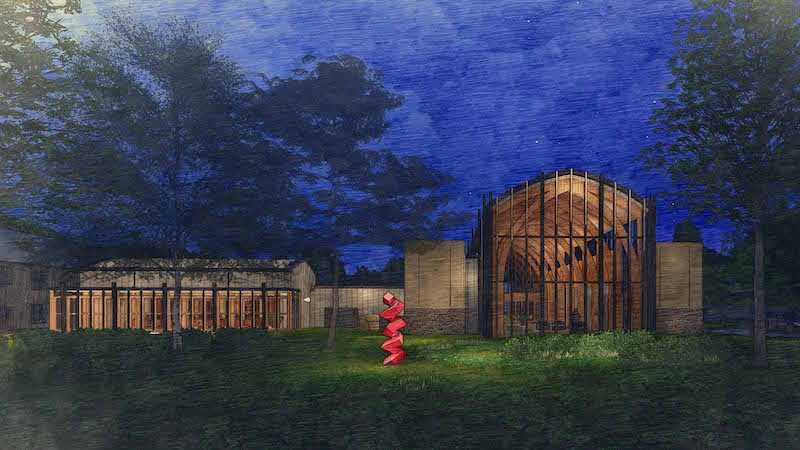 Rendering courtesy of Centerbrook Architects.
Rendering courtesy of Centerbrook Architects.
The second building is a new 16,900-sf, two-story alumni office meant for staff who support Duke’s alumni and development activities. The third aspect of the project is the renovation of the 7,400-sf Forlines House. This building was part of the original design of Duke’s West Campus that was originally constructed as a private residence for a university leader and used most recently as Duke’s Office of News and Communications. The renovation will remove modifications implemented through the years and restores the original rooms and details on the first floor. The renovations will also enhance the second floor for continued use as executive offices.
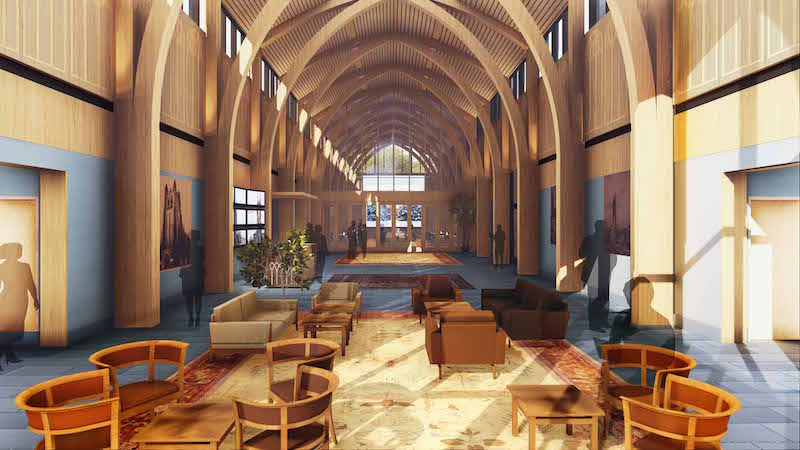 Rendering courtesy of Centerbrook Architects.
Rendering courtesy of Centerbrook Architects.
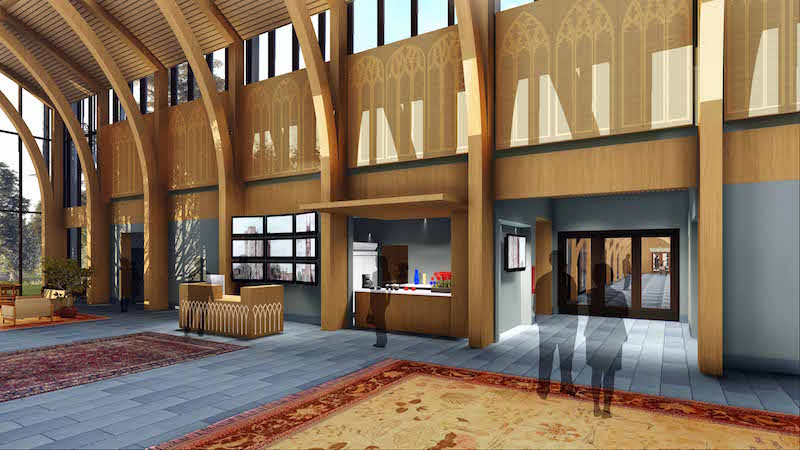 Rendering courtesy of Centerbrook Architects.
Rendering courtesy of Centerbrook Architects.
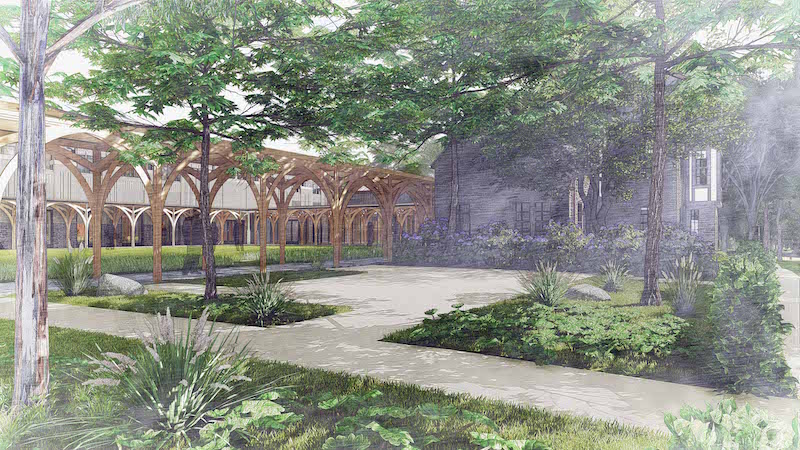 Rendering courtesy of Centerbrook Architects.
Rendering courtesy of Centerbrook Architects.
Related Stories
| Aug 11, 2010
Precast All the Way
For years, precast concrete has been viewed as a mass-produced product with no personality or visual appeal—the vanilla of building materials. Thanks to recent technological innovations in precast molds and thin veneers, however, that image is changing. As precast—concrete building components that are poured and molded offsite—continues to develop a vibrant personality all it...
| Aug 11, 2010
Living and Learning Center, Massachusetts College of Pharmacy & Health Sciences
From its humble beginnings as a tiny pharmaceutical college founded by 14 Boston pharmacists, the Massachusetts College of Pharmacy & Health Sciences has grown to become the largest school of its kind in the U.S. For more than 175 years, MCPHS operated solely in Boston, on a quaint, 2,500-student campus in the heart of the city's famed Longwood Medical and Academic Area.
| Aug 11, 2010
Giants 300 University Report
University construction spending is 13% higher than a year ago—mostly for residence halls and infrastructure on public campuses—and is expected to slip less than 5% over the next two years. However, the value of starts dropped about 10% in recent months and will not return to the 2007–08 peak for about two years.
| Aug 11, 2010
Team Tames Impossible Site
Rensselaer Polytechnic Institute, the nation's oldest technology university, has long prided itself on its state-of-the-art design and engineering curriculum. Several years ago, to call attention to its equally estimable media and performing arts programs, RPI commissioned British architect Sir Nicholas Grimshaw to design the Curtis R.
| Aug 11, 2010
Setting the Green Standard For Community Colleges
“Ohlone College Newark Campus Is the Greenest College in the World!” That bold statement was the official tagline of the festivities surrounding the August 2008 grand opening of Ohlone College's LEED Platinum Newark (Calif.) Center for Health Sciences and Technology. The 130,000-sf, $58 million community college facility stacks up against some of the greenest college buildings in th...
| Aug 11, 2010
University of Arizona College of Medicine
The hope was that a complete restoration and modernization would bring life back to three neoclassic beauties that formerly served as Phoenix Union High School—but time had not treated them kindly. Built in 1911, one year before Arizona became the country's 48th state, the historic high school buildings endured nearly a century of wear and tear and suffered major water damage and years of...
| Aug 11, 2010
Cronkite Communication School Speaks to Phoenix Redevelopment
The city of Phoenix has sprawling suburbs, but its outward expansion caused the downtown core to stagnate—a problem not uncommon to other major metropolitan areas. Reviving the city became a hotbed issue for Mayor Phil Gordon, who envisioned a vibrant downtown that offered opportunities for living, working, learning, and playing.


